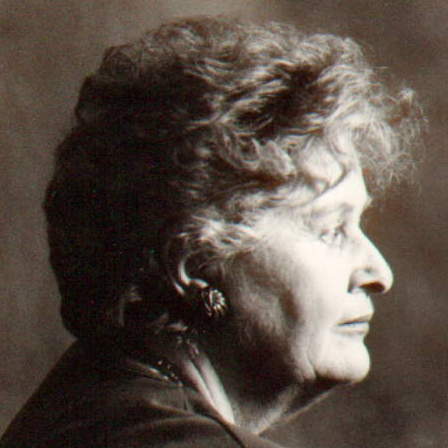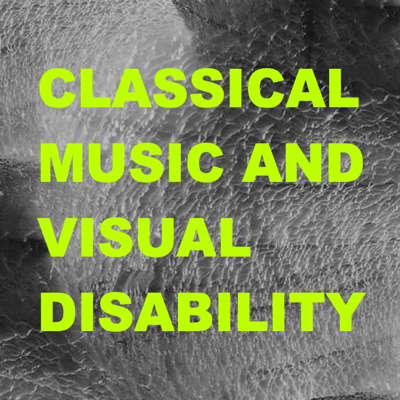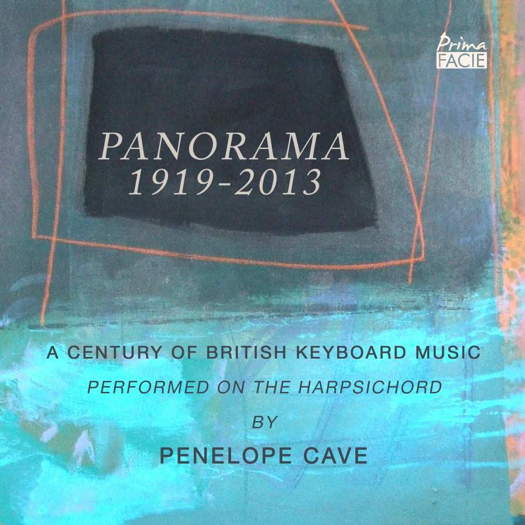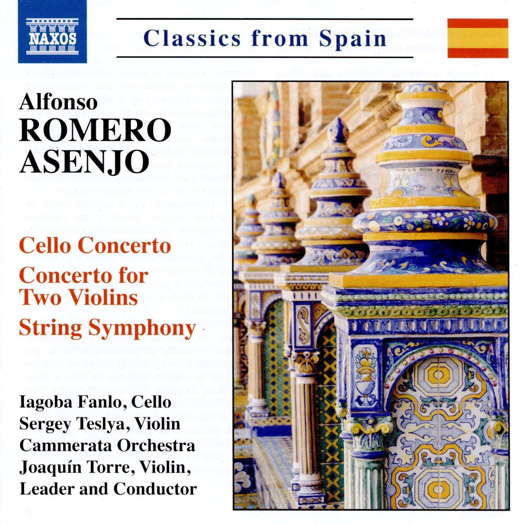 SPONSORED: An Integral Part - Lindsey Wallis looks forward to the Canadian Music Centre's tribute concert to composer Roberta Stephen.
SPONSORED: An Integral Part - Lindsey Wallis looks forward to the Canadian Music Centre's tribute concert to composer Roberta Stephen.
All sponsored features >>
 PODCAST: John Dante Prevedini leads a discussion about Classical Music and Visual Disability, including contributions from Charlotte Hardwick, Robert McCarney, Halida Dinova and Giuseppe Pennisi.
PODCAST: John Dante Prevedini leads a discussion about Classical Music and Visual Disability, including contributions from Charlotte Hardwick, Robert McCarney, Halida Dinova and Giuseppe Pennisi.
 SPONSORED: CD Spotlight. A Fantastic Collection. Penelope Cave Panorama CD. Little-known harpsichord gems, strongly recommended by Alice McVeigh.
SPONSORED: CD Spotlight. A Fantastic Collection. Penelope Cave Panorama CD. Little-known harpsichord gems, strongly recommended by Alice McVeigh.
All sponsored features >>

Particularly Thrilling
Music for strings by Alfonso Romero Asenjo
intrigues GEOFF PEARCE
'It showcases the composer's skill in writing for strings, and at the same time one can sense his development as a composer.'
Alfonso Romero Asenjo, born in 1957 is a new composer for me, and the first work on the disc is his String Symphony, written in 2014. The first movement starts abruptly, and immediately one can hear that Asenjo has a strong grasp of writing for a string ensemble. The work has a restless impetus, and this mood and a rather dense texture dominate this movement. As it progresses, the music becomes more agitated, until this is relieved for a few seconds before striving forth again. The ensemble is tight and performs to a very high standard.
The second movement, Lento, the longest of the three, begins in an almost ghostly fashion and is quite static. It reminds me of a painting shrouded in thick fog, where only the outlines of landmarks can be discerned. It demands the upmost concentration and control from the Cammerata Orchestra, which is truly up to the task. Gradually the fog dissipates, and melodic structures and movement appear. This does not last for long, however, and the opening atmosphere returns. Upper strings are contrasted with the lower ones, and the writing is very effective and atmospheric. Again this feeling is dissipated and a more solid section emerges, only to gradually subside again, but the piece ends more solidly, although somewhat questioningly.
The last movement, Allegro, opens with a rumble in the lower strings, which gradually builds. It contains vitality, restlessness and a kind of pent-up excitement, and in places it reminds me a little of the Bartók Concerto for Strings, Percussion and Celeste, and throws up some fascinating textures and rhythms. I find it the most varied and interesting movement of the three. It ends quietly.
Listen — Alfonso Romero Asenjo: Allegro (String Symphony)
(track 3, 3:48-4:39) © 2019 Naxos Rights (Europe) Ltd :
The Divertimento was written in 1995 for a youth orchestra, and is in three very short movements, the longest being the central Lento, at just a little more than two minutes. This work is much more tonal and melodic than the String Symphony, and I imagine it would be enjoyable for a youthful string ensemble to play. The last movement, an Allegro utilising fugato, is particularly thrilling.
Listen — Alfonso Romero Asenjo: Allegro (Divertimento)
(track 6, 0:17-0:45) © 2019 Naxos Rights (Europe) Ltd :
The substantial Cello Concerto of 1995 is in a single movement of about twenty-one minutes, opening with a dark and rather dense string passage. Iagobo Fanlo's cello enters without much ceremony. The writing for the soloist is much more melodic in nature than the accompanying parts. The melodic lines are long and interconnected. This is an expressive work, and the cello part is not a flashy exhibition. This mood is interrupted by a faster section, requiring greater virtuosity from the soloist. There are quite a few contrasting sections, but the changes tend to be subtle ones in this rhapsodic piece, except for the driven, fast section, but even this subsides into a reflective, sad, final section. This is a work that really grows on you with repeated listening, and is one that I hope will engage more cellists worldwide. There is a kind of sorrow here which is hard to define. The soloist is fine, producing a lovely lyrical sound, and has a clear understanding of this work.
Listen — Alfonso Romero Asenjo: Cello Concerto
(track 7, 7:49-8:49) © 2019 Naxos Rights (Europe) Ltd :
As a contrast, the last work (from 1989) is a concerto for two violins and string orchestra, in three movements. It is partly conceived as a tribute to J S Bach's Concerto for Two Violins, and one can clearly hear references to the Baroque in this music.
The first movement starts with a slow introduction that soon breaks into fugato. The soloists enter one at a time. The music is lyrical, yet driven, and one can sense the inspiration for which it is a tribute.
In the second movement, slow and thoughtful, the two soloists play a lovely tune over a measured bass line. This is superb and very heartfelt, without wallowing in any sentimentality.
The final movement, another Allegro, has, with its intertwined solo parts, the same kind of intensity as the last movement of the Bach Double Concerto. This is a great pairing: soloists Sergey Teslya and Joaquín Torre - who also leads and conducts the ensemble on this CD - match each other perfectly.
Listen — Alfonso Romero Asenjo: Allegro
(Concerto for Two Violins and String Orchestra)
(track 10, 1:33-2:24) © 2019 Naxos Rights (Europe) Ltd :
All in all, this very interesting disc is, for me, at least, intriguing and enjoyable. It showcases the composer's skill in writing for strings, and at the same time one can sense his development as a composer. The performances, from both soloists and the ensemble, are very fine.
Copyright © 10 June 2019
Geoff Pearce,
Sydney, Australia



